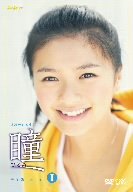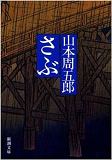The morning drama "Massan" modeled on the father of Japanese whiskey Masataka Taketsuru and Rita is very popular. I'm looking forward to seeing it every day, but today I would like to introduce Asa Dora's "Himi" (broadcast in 2008) set in Tsukishima and Tsukuda.
Hitomi Ippongi (20 years old), who plays the theme song by trombone player Eijiro Nakagawa and the opening of the bird's-eye view of Tsukuda and Tsukishima, is the main character Hitomi Ippongi (20 years old), who plays Nana Eikura, who aims to become a hip-hop dancer in Sapporo, started with her mother's Momoko, and she went to Tokyo for the funeral for the first time with her grandfather. My grandfather, Katsutaro, is a foster parent (Tokyo's nursing home system:
http://www.fukushihoken.metro.tokyo.jp/kodomo/satooya/seido/hotfamily/index.html)
He raises three foster children, led by junior high school students, but his eyes go to a dance school in Shibuya while living at his grandfather's home in Tsukishima as a young foster parent instead of his deceased grandmother.
The eyes, who looked at the balance between foster parents and dance, communicated with his grandfather Katsutaro and Satoko, and grew up with the support of the people of Tsukishima, despite various small incidents. On the other hand, at the dance school, dance aims to win the tournament by forming a unit with strong friends while dancing. At the end of the tournament, the unit was dissolved, and the eyes that were attacked by a sense of weakness had grown their eyes with one woman while working at a cosmetics company until now, and now they have been transferred to the Tokyo branch office and work for a men and women of all ages. One day, a father who divorced Momoko with his grandfather Katsutaro appears in Sumiyoshi-jinja Shirine. 。 。 From the 25th week, the summer of Keijime, to the 26th week (final week), in the festival town, the drama is finally climaxing with the excavating a large banner, assembling the Sennuki Mikoshi, and the scene toward the day of Sumiyoshi-jinja Shirine Reitaisai festival.
[Sumiyoshi-jinja Shirine Grand Festival Large Nobori: Exhibited at Tsukuda Machikado Exhibition Hall]
In fact, unfortunately, the audience rating of "Eye" was quite low among NHK's past morning dramas, and it seems that it was a work that was very popular in the media and the Internet at the time of broadcasting. Although it is a personal impression, as a drama broadcast during the busy hours of morning such as going to work or going to school, it deals with slightly heavy topics such as foster parents and divorce of parents and rehabilitation, and slowly watch TV It may be the reason that the hurdles for viewers have been raised by the fact that hip-hop, which seems to be somewhat difficult to gain understanding for seniors who can watch. I enjoyed talking while drinking beer slowly at night, but it is recommended that this drama be relaxed and watched slowly. It's a total of 156 times, so don't let me know!
[New Year scenery of Sumiyoshi-jinja Shirine]
A lot of highlights of Chuo-ku appear in "Himi" set in Tsukishima and Tsukuda, where the atmosphere and human relationships of the downtown area remain strong. Katsutaro's Ippongi Western Shop and Tsukishima's alley scenery on Monja Street in Tsukishima where the eyes live, Chuo-ohashi Bridge and the eyes practice dancing, the Paris Square in Tsukuda where the eyes practice dancing, Sumiyoshi-jinja Shirine to Kachidokibashi, and Tsukiji Market. In addition, Tsukishima Minami Junior High School (without realism), which is set to go to Satoko's children, seems to have been filmed at Tsukuda Junior High School (Tsukuda 2-chome). The Reitaisai festival, including the imperial procession Funatogyo, can be seen in the drama, so I recommend it especially during the 25th and 26th week (Vol. 13 in DVD) . It seems that it has not been uploaded on NHK's on-demand, but it can be enjoyed on DVDs released by NHK Enterprises (some rentals are also available).

[The Eye] Released from DVD NHK Enterprises


